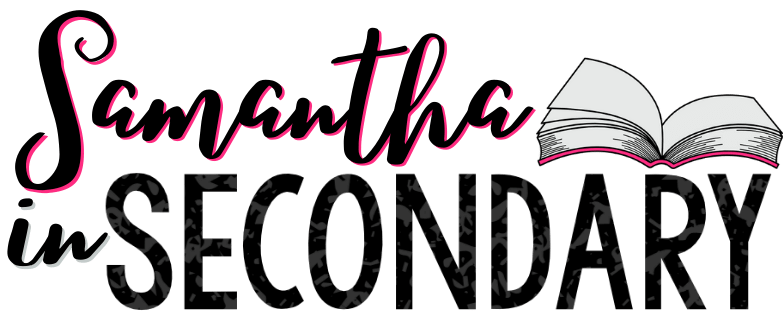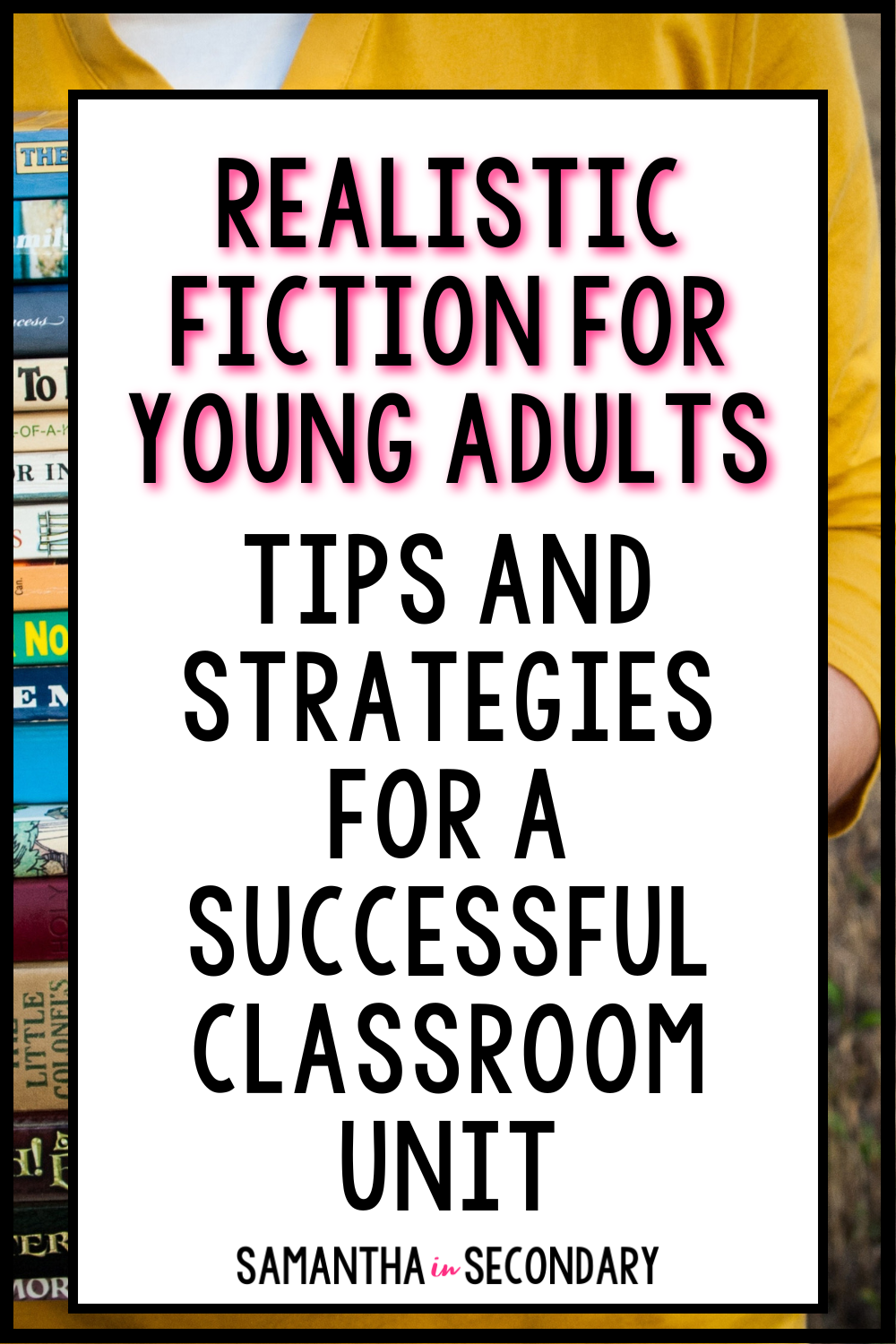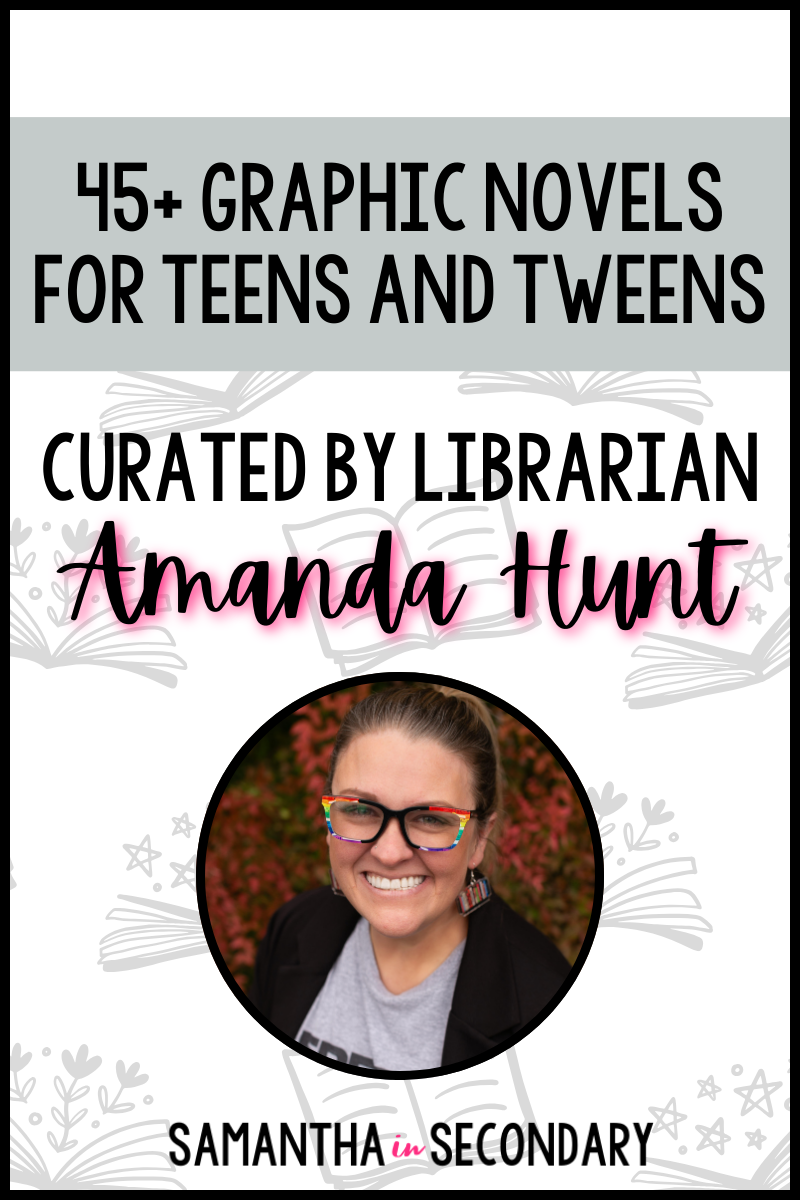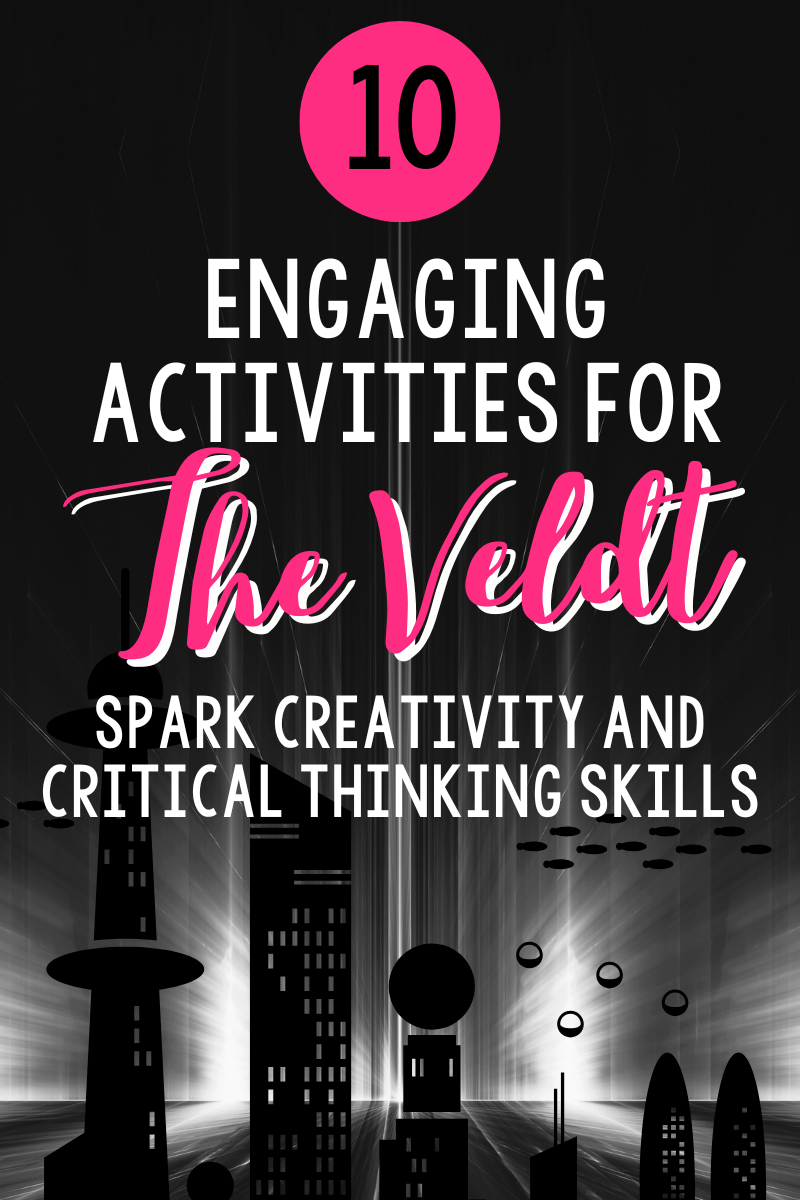As a middle school or high school ELA teacher, it can be hard to know which kinds of activities are best for the first week of school. Should you do some icebreakers? Get straight to the content? What about building classroom culture? All of these questions can be overwhelming, so six established ELA teachers are here to share their best tips and tricks for starting your year off on the right foot and making it the best year yet!
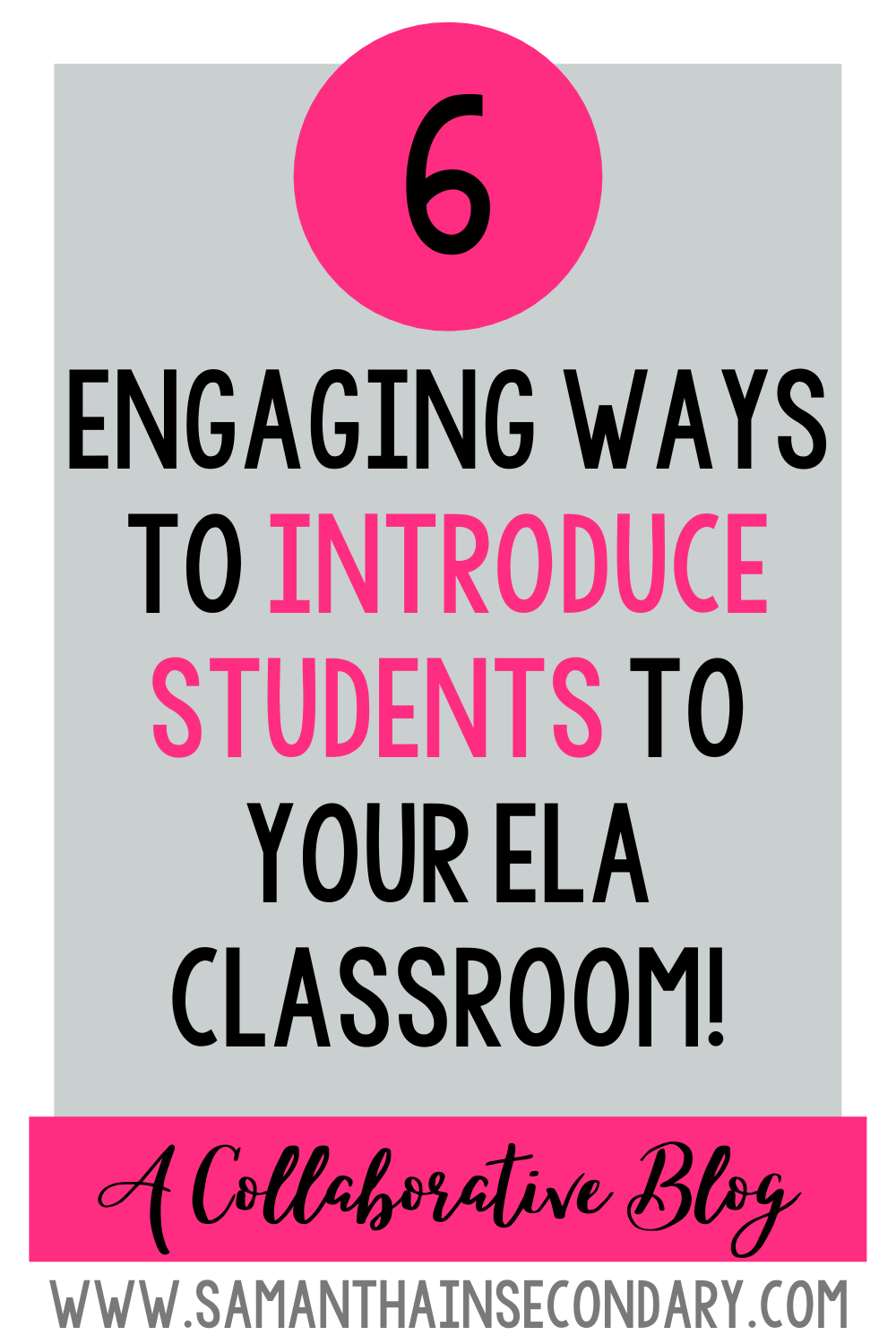
#1: Plan the First Two Weeks
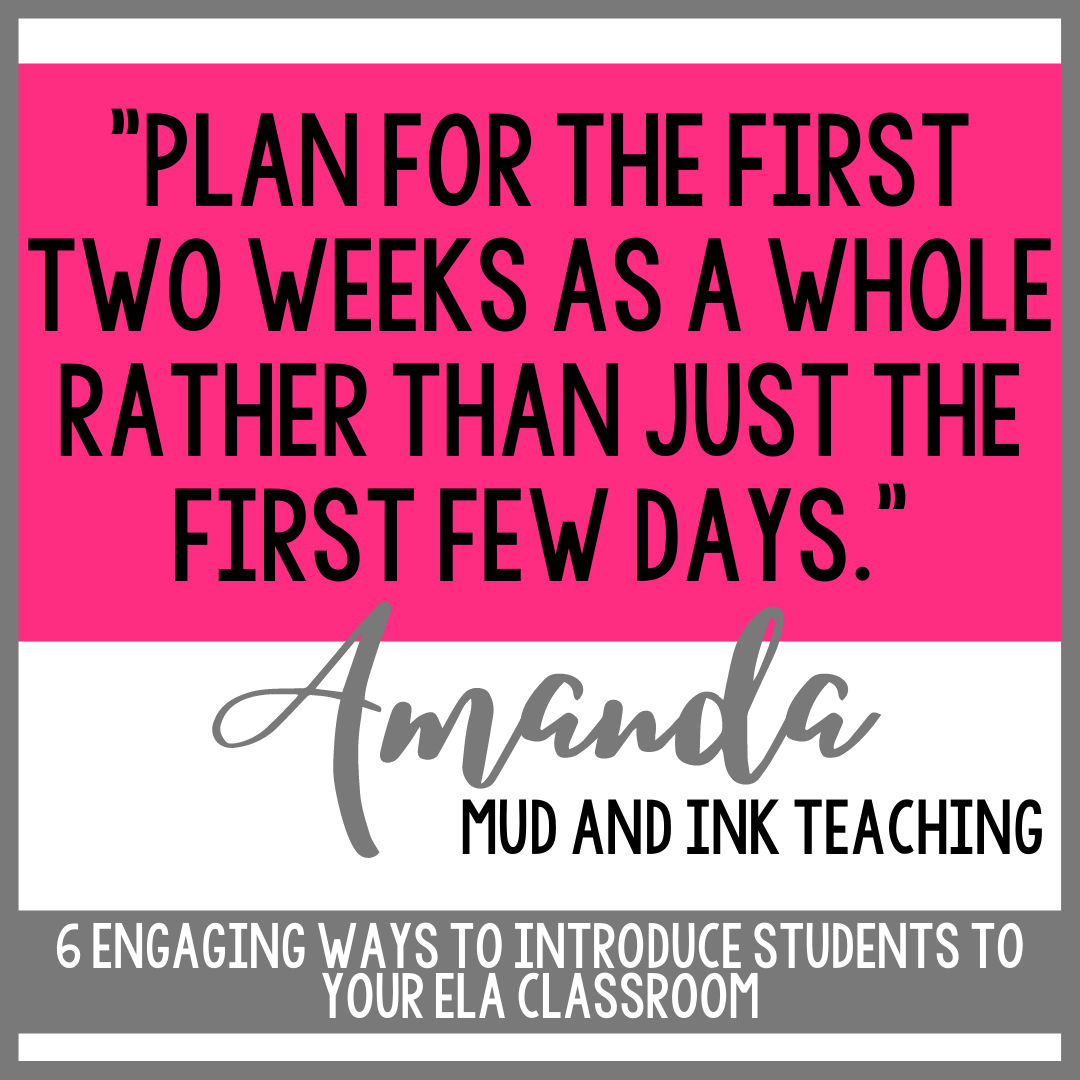
There’s often massive overwhelm for teachers trying to decide what to do on the first day of school. What’s worse though, is that once those initial days are over…there are still more days! Amanda from Mud and Ink Teaching has lived this for over a decade. Planning like a squirrel on espresso for the most amazing first day of school always left her feeling exhausted only to have to pick herself back up again to continue teaching for another week, and another week, and another week…
After experiencing this too many times, Amanda finally figured it out: plan for the first two weeks as a whole rather than just the first few days. A two-week or ten day plan left Amanda feeling comfortable and rested across two weekends giving her time to slowly adjust to school life again. It gives her time to do the important things without rushing: learning student names, establishing routines, and allowing for the natural adjustment of rosters as students move classes and schedules change.
When planning for a first two week plan, begin with the end in mind and backwards plan. Where do you want your students to be by the end of the first two weeks? For Amanda, she wants students to have both classroom relationship building moments as well as academic checkpoints, so she ends her two week plan with a Socratic seminar. She builds backwards into that event by building routines, classroom expectations, and some touchstone relationship building activities so that students are comfortable with one another for their first major academic discussion. You can read all about her first ten day plan on her website and take some of the ideas for your own classroom!
#2: Use Attendance Questions to Build Classroom Culture
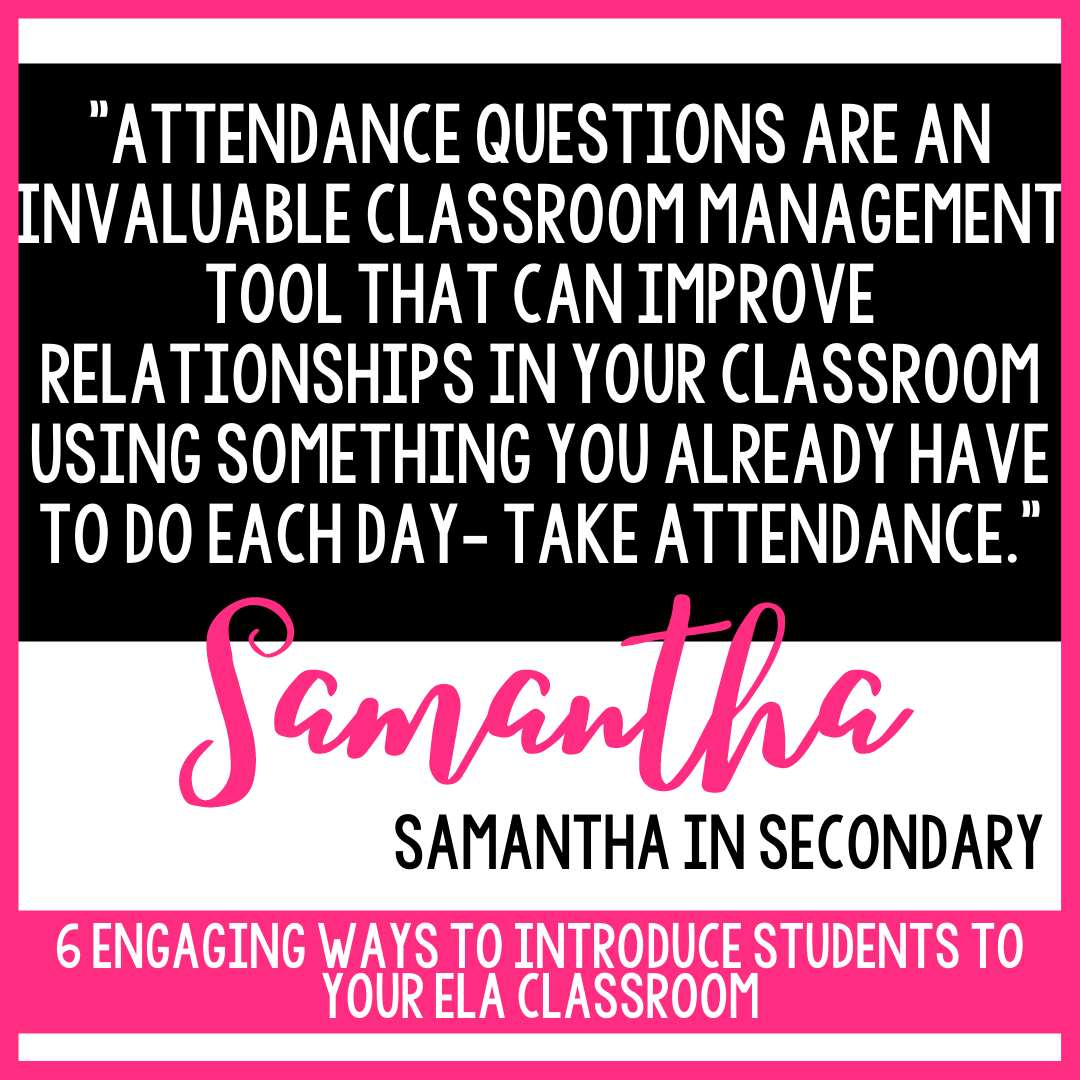
Attendance Questions are an invaluable classroom management tool that can improve relationships in your classroom using something you already have to do each day- take attendance. Samantha from Samantha in Secondary has been using attendance questions for years and highly recommends the practice to anyone looking to instantly strengthen classroom culture.
Implementing attendance questions is simple. Each day when you take attendance, ask students to answer a simple question. It can be a getting to know you style question, a this-or-that question, or maybe something deeper that connects to a text you are teaching. Call each student’s name and allow them an opportunity to answer. At first, this might take longer than you’d like as students get used to the process, but as they practice, it becomes second nature and takes no time at all. Students love discussing the question each day and having a chance to share something about themselves with the class.
If you are looking for a set of attendance questions completely done for you, click here. This set is updated each year to include new questions. Another fun practice is having students come up with their own. They love seeing their questions used in class!
Implement attendance questions in your own classroom and you’ll see how quickly you are able to strengthen relationships with your students.
#3: Name Tent One Pagers
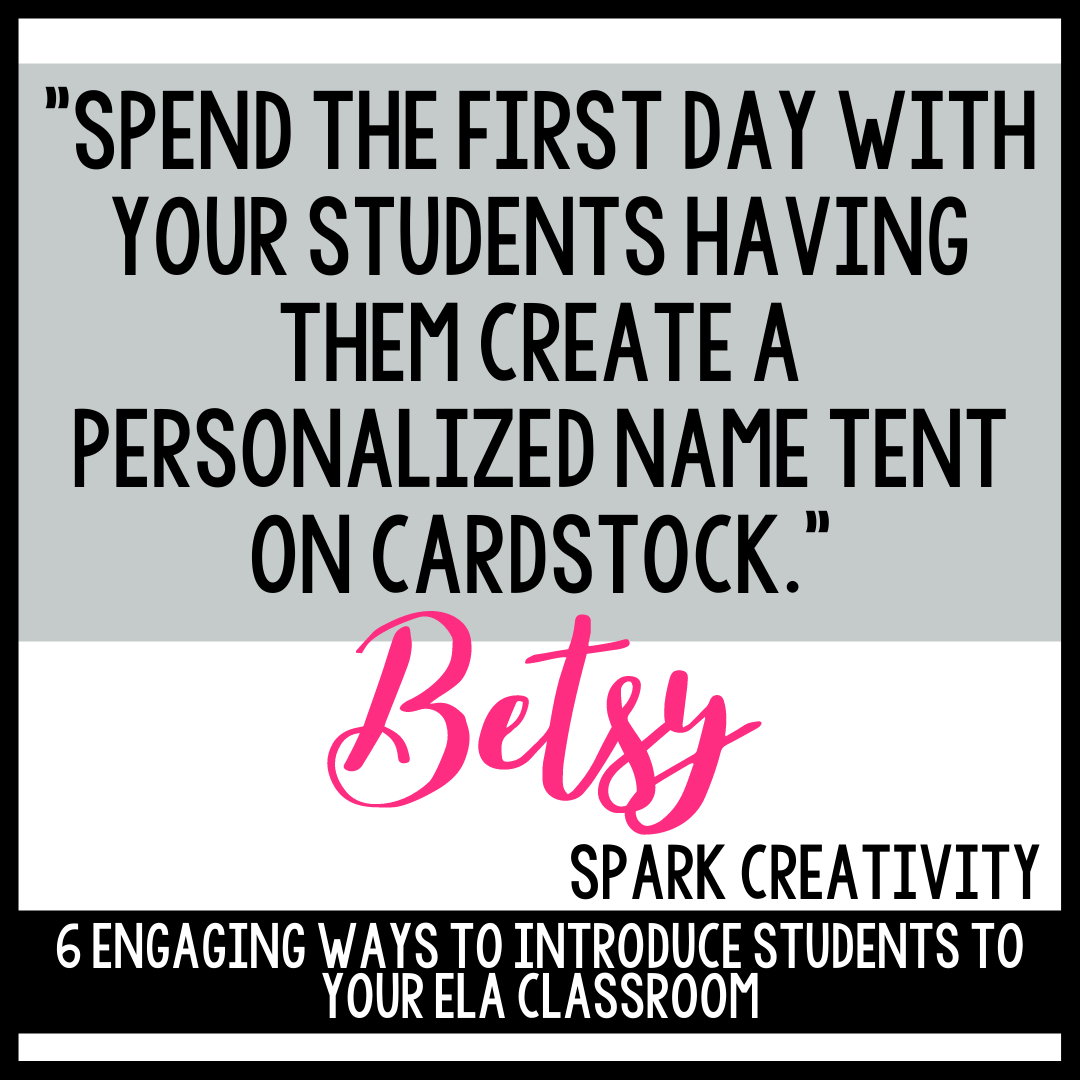
Betsy, from Spark Creativity, always found learning names to be one of the most stressful parts of the first week of school, until she finally stumbled upon a magical solution. It was the year she started teaching in Bulgaria, and she had a Katerina, an Ekaterina, a Kalina, a Kali, and a Kari. I bet you can understand how she felt! You don’t want to get students’ names wrong and risk harming your relationships right from the get-go, but what’s an overwhelmed teacher to do with dozens of names to learn while teaching a mile a minute?
Enter, name tent one-pagers. With or without a template (like this one), spend the first day with your students having them create a personalized name tent on cardstock, including a list of elements you require, like their full name, an image that represents them, a favorite quote, their preferred subjects, etc.
Snap a photo of each student with their name tent and flip through them over the next 24 hours until you learn everyone’s name. It will make a world of difference to you! Then use the name tents in class for a few days just to be sure, and keep them handy to throw out impromptu seating charts, assign groups, or save your sub angst down the line.
#4: Jump Right In with a Mini-Lesson
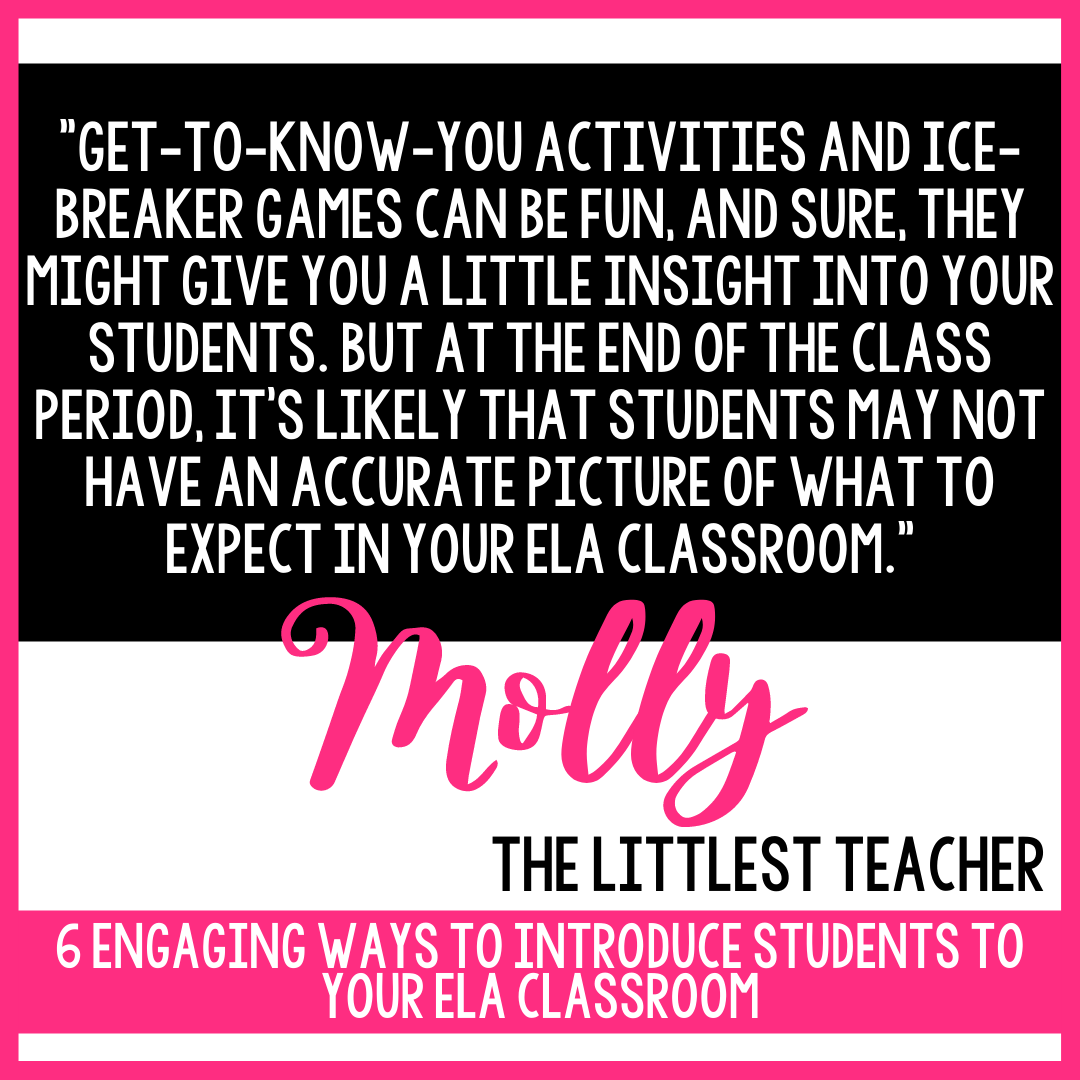
Molly at The Littlest Teacher takes a slightly unorthodox approach to the first day of school: she likes to just start teaching!
Get-to-know-you activities and ice-breaker games can be fun, and sure, they might give you a little insight into your students. But at the end of the class period, it’s likely that students may not have an accurate picture of what to expect in your ELA classroom.
Of course we want to get to know our students and to build those relationships. But relationships take time. You will get to know your students daily throughout the year and you’ll have countless opportunities to show them you care. Teaching a mini lesson on the first day doesn’t say, “I don’t want to get to know you;” it just says, “ELA is a busy class, so here’s an accurate sample of what to expect. We’re going to learn and grow together this year.”
You also have a syllabus to go over and classroom procedures to teach. But here’s the thing: if every teacher on the first day of school just spends an hour going over rules and procedures, how much of that are students going to remember? Not much. Procedures and expectations can be taught throughout the first couple weeks of school, as they become relevant. Students will remember them better that way anyways.
For more discussion of this approach, check out the blog post, How to Have a Productive and Successful First Day of Class.
#5: Set the Stage for Rich Discussions with an Engaging TED Talk
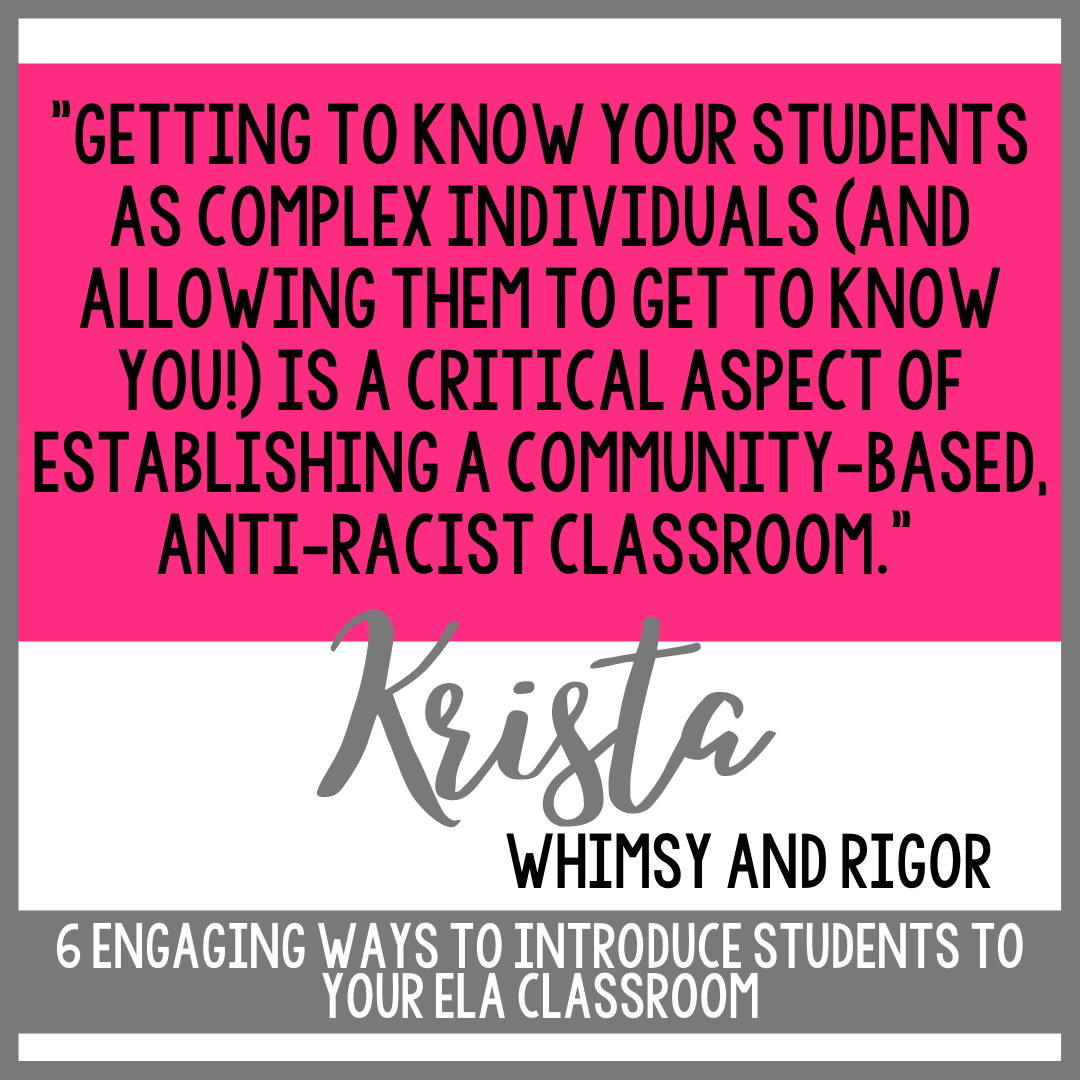
Getting to know your students as complex individuals (and allowing them to get to know you!) is a critical aspect of establishing a community-based, anti-racist classroom and Krista from @whimsyandrigor makes this a priority in the first week of school.
She starts by demolishing the idea that everyone can be boiled down to a single story or a single word. (This is also used as a basis for character analysis, so stay tuned for that connection!).
To start, have students write down 3 words that best describe them. For example: funny, a girl, athletic, smart, disorganized, etc. The teacher should do this too.
Then, tell students to cross out the 2nd word they wrote. Then have them cross out the 1st word. Tell them to circle the final word on their list.
Ask, “Does this word fully describe you?” Hopefully you will hear a resounding “No!”
Lead a discussion where students describe what is lost when they are reduced to just one word.
With 5 minutes on a visual timer, (Krista can’t live without this one!), allow students to journal what it felt like to be seen as only one thing. It could be the word they circled on their paper or it could be a memory of when someone made them feel incomplete or saw them as only one trait (“just a girl” or “the Asian kid” etc). Depending on their level of comfort and trust, they may choose to share their writing with the class, just with you, or not at all.
Now play Chimamanda Ngozi Adichie’s “Danger of a Single Story” TED Talk. If time allows, play the whole video. If time is limited, play the first 7 minutes. Adichie explores what happens when people are seen and when people see others as a single story. Her honesty with being both the observed and the observer is profound and worth discussing with students.
After the video, explain to students that you will work to see them as so much more than just one trait, especially if that has not been their experience with teachers in the past. By having an open and honest conversation about the relationship you will build with the class and with each student, they will begin to see you as a person in a space that they can trust. And that, my friends, is when true learning and growth can occur.
Plus! When you dive into literature together, you can help them deeply analyze characters by making them go beyond the surface and explore the multidimensionality of the protagonist. Because, as in life, not a single character from literature can be reduced to a single word.
#6: Wait… I Can Let Students Sit Where THEY Want?!
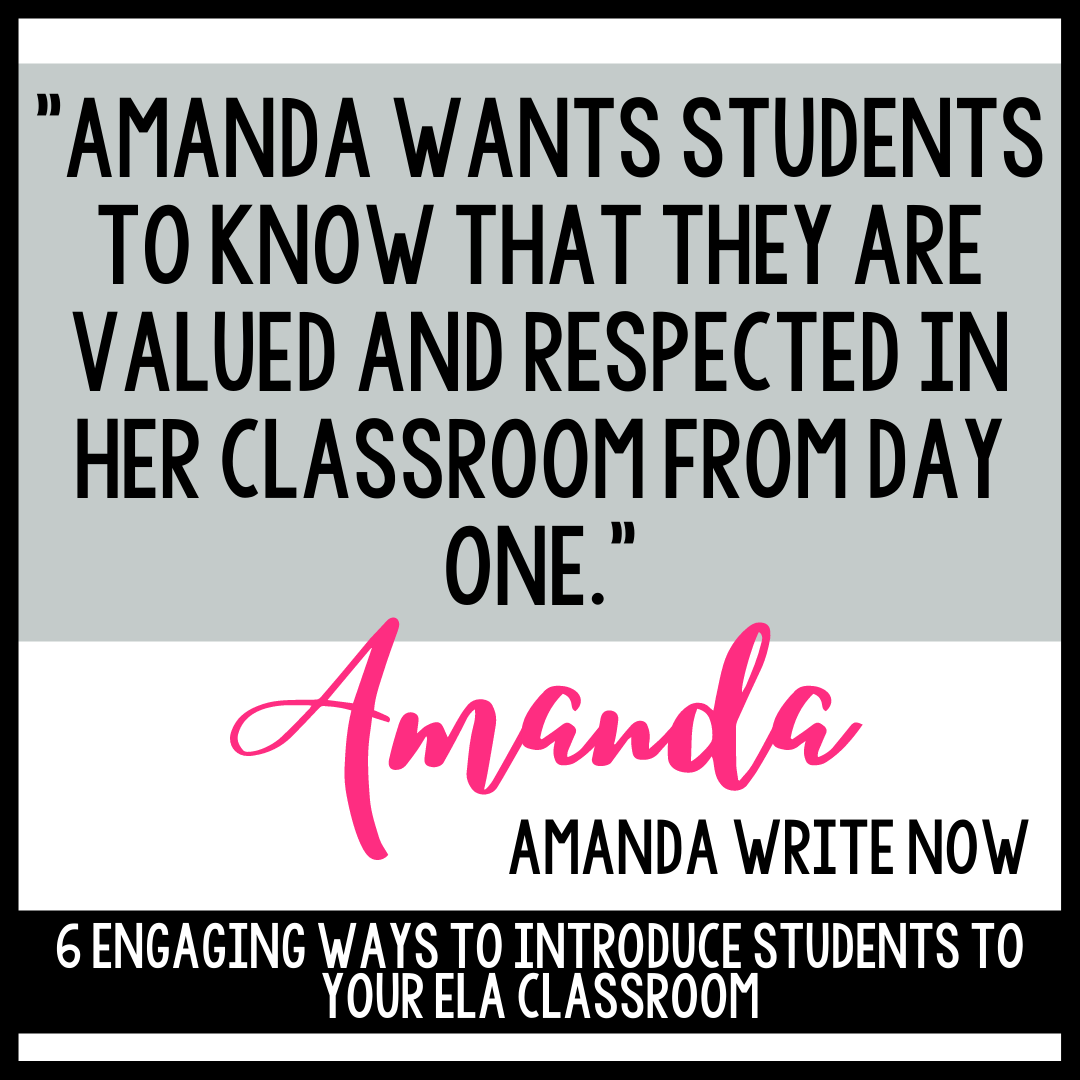
Amanda from Amanda Write Now wants students to know that they are valued and respected in her classroom from day one!
First, she allows students to sit where they want the first day. This is an excellent opportunity to reaffirm friendships that are already established and help students get to know new friends as well.
As soon as students are seated Amanda briefly introduces herself letting students know they are in good hands because of her experience in education. She shows pictures of herself as a kid (pimples, awkwardness and all), pictures of her family and a few hobbies she enjoys.
Then, she talks about the value in mistakes and her one and only classroom rule, kindness, toward self and others. She talks about how there are many ways to show kindness in a classroom and that students are showing kindness at that very moment by listening attentively to their teacher! Amanda discusses three ways that she shows kindness towards students in her classroom:
- Names: Amanda makes strong efforts to pronounce names correctly and makes lots of time for students to learn each other’s names. She requires that students call on each other by name during class and group discussions.
- Student Feedback: Amanda sends out Google Forms frequently throughout each unit to find out how students are doing and get feedback from them about how the class is run and the lessons she teaches. She truly values their input and lets them know that on day one. Students often have brilliant ideas that she utilizes!
- Choice: Amanda gives students choice as often as possible in what they write, read and how they demonstrate their learning. One method of teaching reading and writing that allows for lots of choice is reading and writing workshop…
On the second day of school Amanda begins teaching students about the routines of reading and writing workshop. Check out how she organizes her first 14 days of reading and writing workshop here.
We hope these teaching strategies help you find plenty of ways to prepare for the first week of school and beyond. What are your favorite activities or tips for the back to school season? We’d love to hear from you in the comments below!



